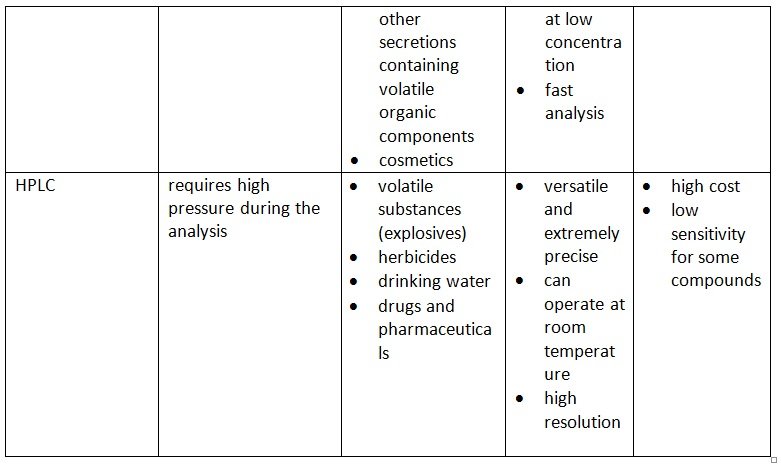[cs_content][cs_section parallax=”false” separator_top_type=”none” separator_top_height=”50px” separator_top_angle_point=”50″ separator_bottom_type=”none” separator_bottom_height=”50px” separator_bottom_angle_point=”50″ style=”margin: 0px;padding: 45px 0px;”][cs_row inner_container=”true” marginless_columns=”false” style=”margin: 0px auto;padding: 0px;”][cs_column fade=”false” fade_animation=”in” fade_animation_offset=”45px” fade_duration=”750″ type=”1/1″ style=”padding: 0px;”][cs_text]Forensic Chemistry > 1. The job of the forensic chemist is to identify materials and trace their origins > The Progress in Analytical Chemistry >[/cs_text][cs_text style=”color: #800000;font-family: “Oxygen”,sans-serif;”]Discuss, using a recent example, how progress in analytical chemistry and changes in technology can alter the outcome of a forensic investigation[/cs_text][cs_text]One technique that can be used for forensic investigation is chromatographic analysis. These are:
- Thin layer chromatography (TLC)
- Gas chromatography (GC)
- High performance liquid chromatography (HPLC)
[/cs_text][cs_text]
 [/cs_text][cs_text]Technological advances lead to the development of more techniques that can be used in analytical investigations. The limitations of a certain technique could be resolved by introducing new techniques. This greatly helps the forensic chemists to achieve better results in shorter period of time.[/cs_text][/cs_column][/cs_row][/cs_section][/cs_content]
[/cs_text][cs_text]Technological advances lead to the development of more techniques that can be used in analytical investigations. The limitations of a certain technique could be resolved by introducing new techniques. This greatly helps the forensic chemists to achieve better results in shorter period of time.[/cs_text][/cs_column][/cs_row][/cs_section][/cs_content]